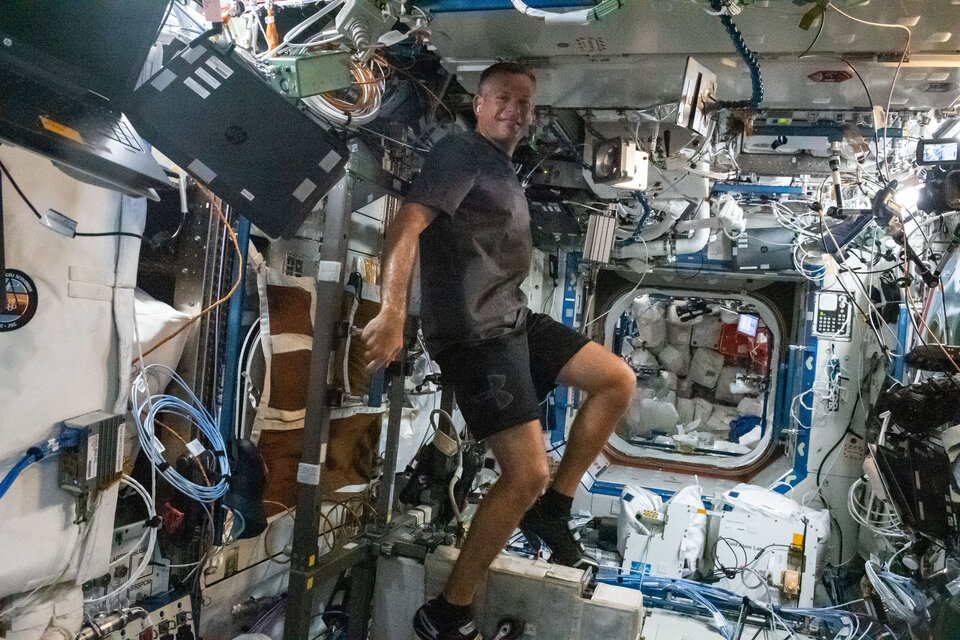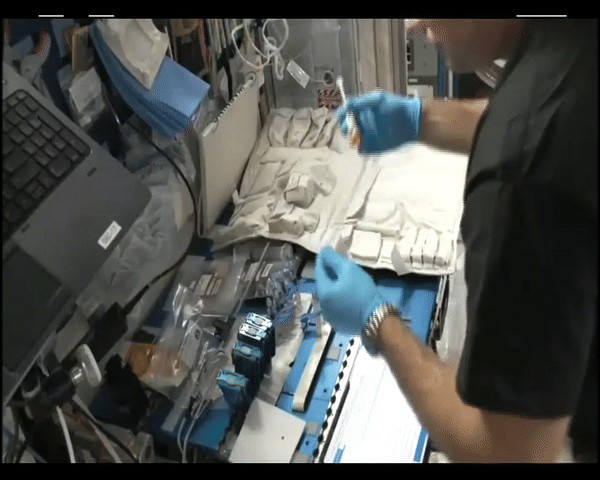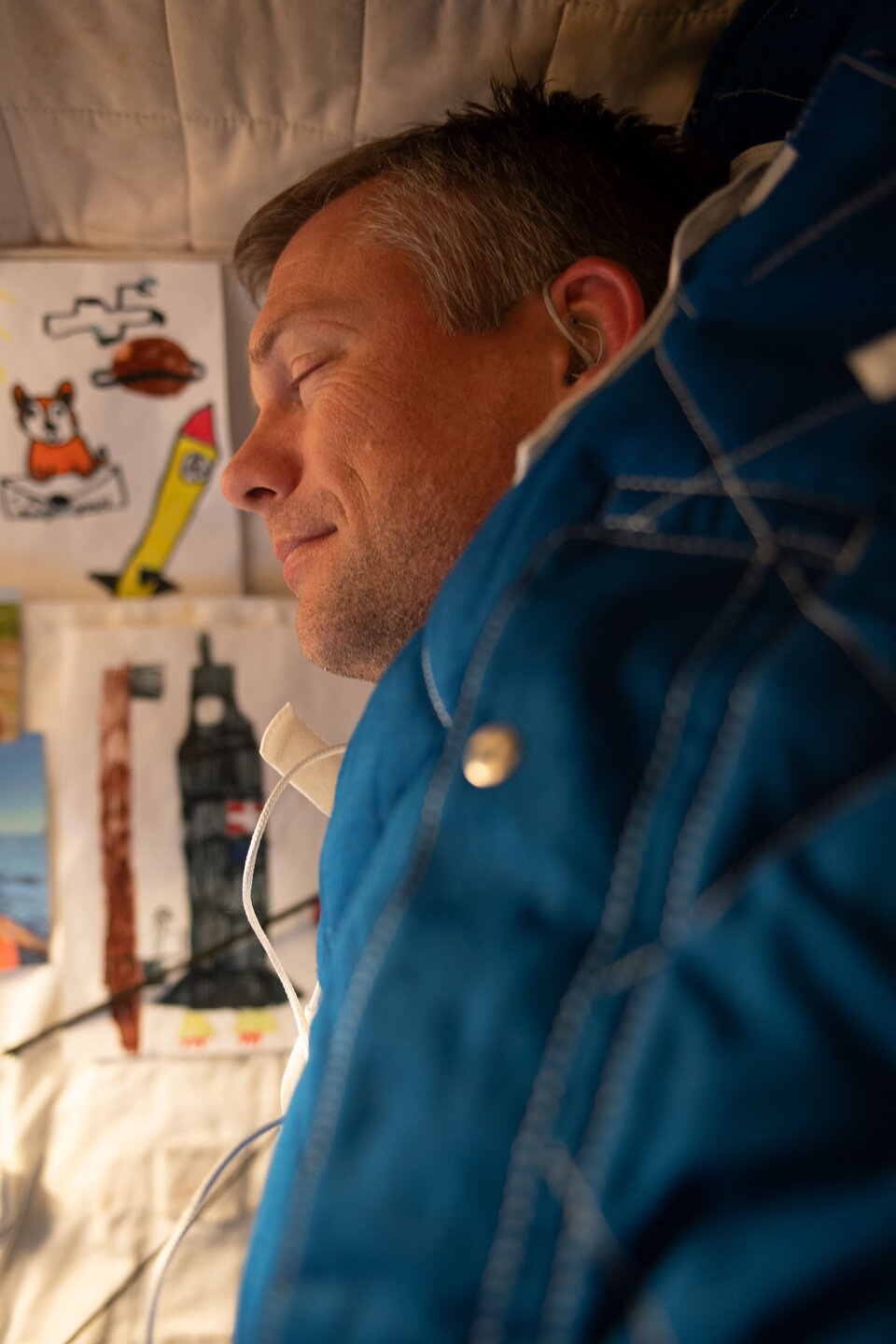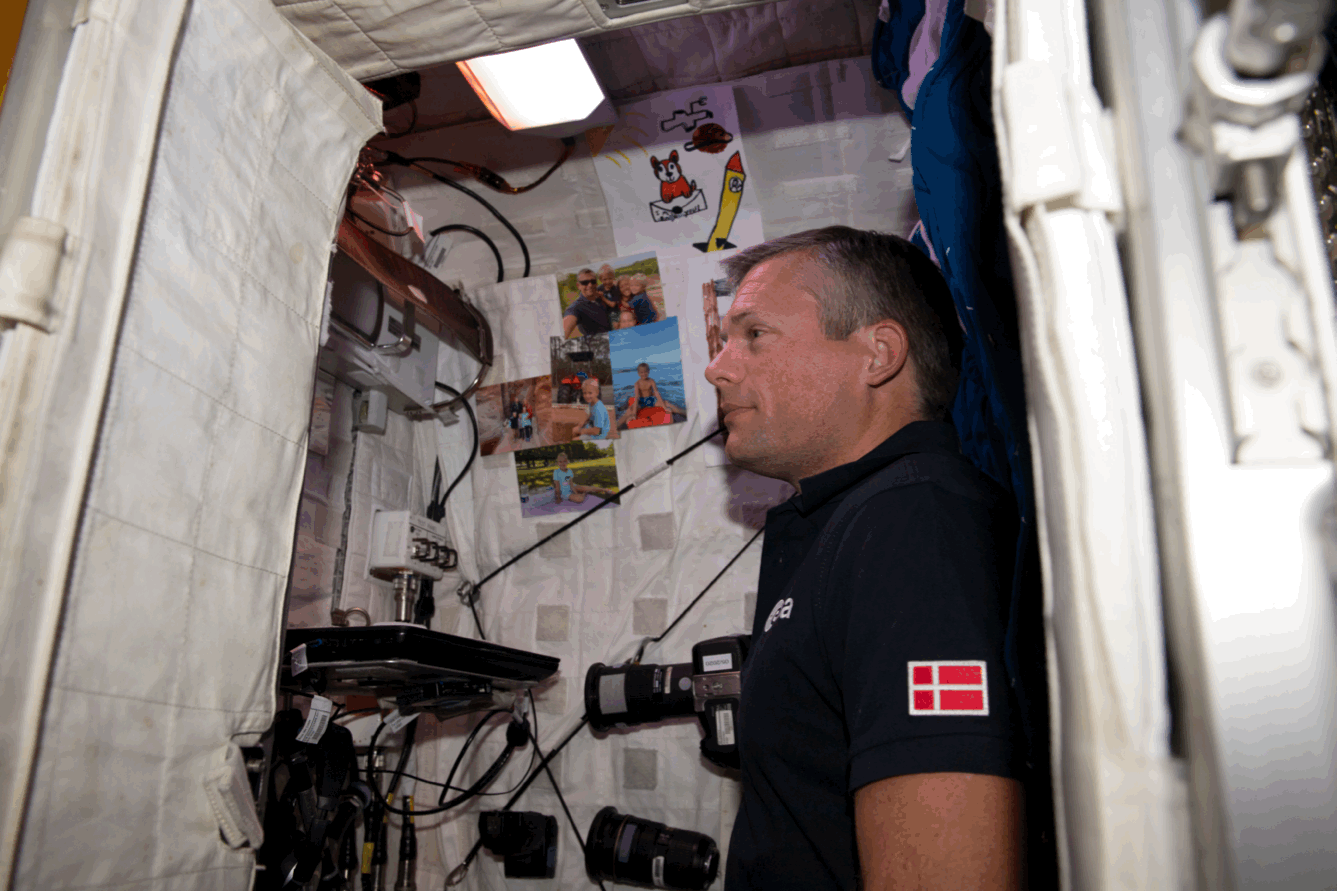Health science in orbit
Missions to the International Space Station focus on conducting science at Earth’s orbiting laboratory. One of the science pillars for Andreas Mogensen’s Huginn mission was health where researchers study the effects of microgravity on the human body in space. Here is an overview of some of the science that Andreas performed during his six-month mission.
SpaceWear

SpaceWear from Danish Aerospace Company (DAC) is a health monitor the size of a big watch strapped around the torso. Andreas wore the monitoring device for several days. The gadget measured parameters like heart rate and skin temperature at a rate of 1000 times per second.
“We received seven to eight hours of data for each day Andreas wore it and we hope to have the hardware returned to Earth soon,” says Thomas E. Andersen, CEO of DAC.
While SpaceWear was tested by Andreas during his Huginn mission, the small health monitor also has applications in extreme environments on Earth. “We are also working with motorsports because SpaceWear can provide accurate data for the high gravity loads the drivers experience,” adds Thomas.
Immunity Assay

Understanding how the immune system reacts to prolonged stays in space is the focus of Immunity Assay, led by Alexander Choukér and Judith-Irina Buchheim with their team at Ludwig-Maximilians University (LMU) Hospital in Munich, Germany. As the first ESA astronaut to participate, Andreas engaged in the preparation and incubation of 48 blood samples over three sessions.“This project has been challenging in the best way as we are building a basis for future monitoring of astronaut’s immune system as they go to the Moon and Mars, says Alexander Choukér, professor and Head of Research Laboratory I – 'Stress and Immunity’ at LMU´s Department of Anesthesiology.
"It requires a strong and agile collaboration between academia, industry, ESA, and NASA. All these institutions worked together for the astronaut, in this case Andreas, to take a sample, process it and store it. This cooperation is remarkable, and we look forward to more samples from the current and future crew members. ” adds Alexander. The contributors to the project are the contractor company Kayser Italia, NASA Johnson Space Center’s Immunology lab, BIOTESC, CADMOS and other helping hands.
Andreas’s samples are now back on Earth and will soon arrive to the laboratory in Munich, Germany, for analyses.
Sleep in orbit

Many astronauts sleep worse in space compared to Earth. Is this experience reflected in the brain of the astronauts as they sleep, and how does sleep change between Earth and space?
Andreas wore measurement devices in his ears for several nights during his mission for the Sleep in Orbit experiment. The devices were about the size of in-ear headphones and measured his brain activity during sleep.
“The quality of the measurements we received from Andreas was great, with a total of 20 recorded nights on the Space Station. We look forward to more astronauts on current and future missions using our hardware to better understand how they sleep,” says Simon Kappel, assistant professor at Aarhus University, Denmark.
More astronauts from Crew 8 and Crew 9 will perform the Sleep in Orbit experiment. This gives the science team a total of five astronauts to study, together with data from Andreas and ESA project astronaut Marcus Wandt. The experiment team expects the results to be published in 2025, once all the data has been collected and analysed.
Circadian light

Another experiment about sleep was the Circadian light, designed by SAGA Space Architects to support the astronauts’ day and night cycles, also called circadian rhythm. A light panel placed in Andreas’s sleeping quarters would wake him up with a simulated sunrise, which would turn white during the day and change to a more reddish colour during the evening, mimicking the natural colours of the sky on Earth.
“We were happy to see the lamp installed in Andreas’s space bedroom and having him test it over his Huginn mission,” says Simon Kristensen, co-founder and CTO of SAGA Space Architects.
“The lamp stayed in his sleeping quarters for most of the mission and we have gathered quite some data on his experience with the lamp, which we look forward to analysing. The lamp is designed to make living in extreme environments more enjoyable and support the circadian rhythm to ensure a good night’s sleep,” adds Simon.
You can read more about the science Andreas conducted during his mission on the Huginn page and see amazing pictures from the International Space Station on his Instagram .


